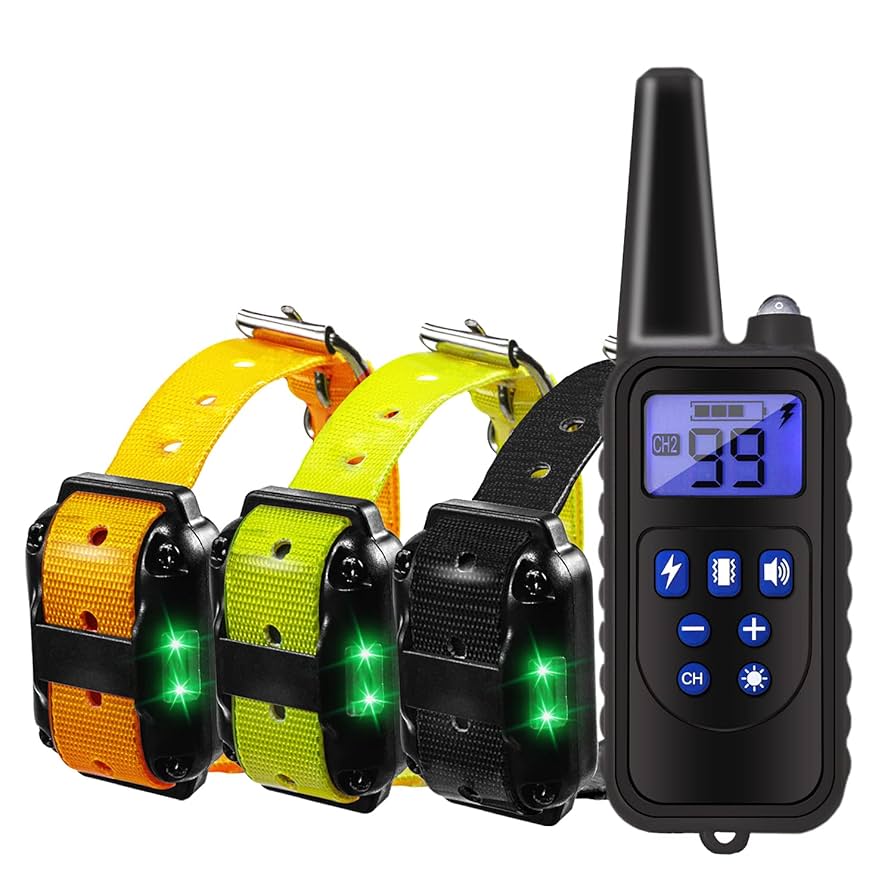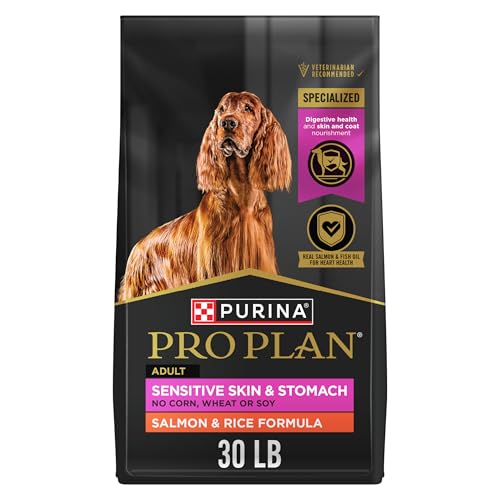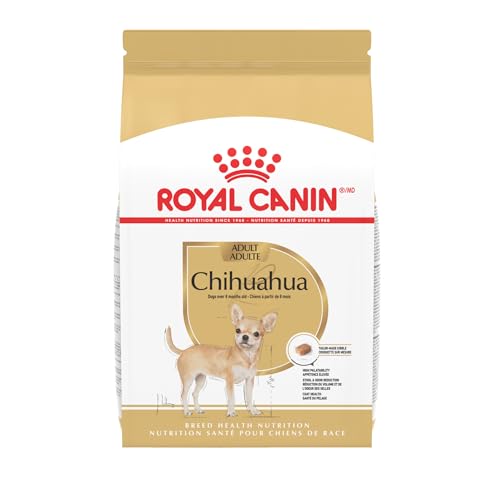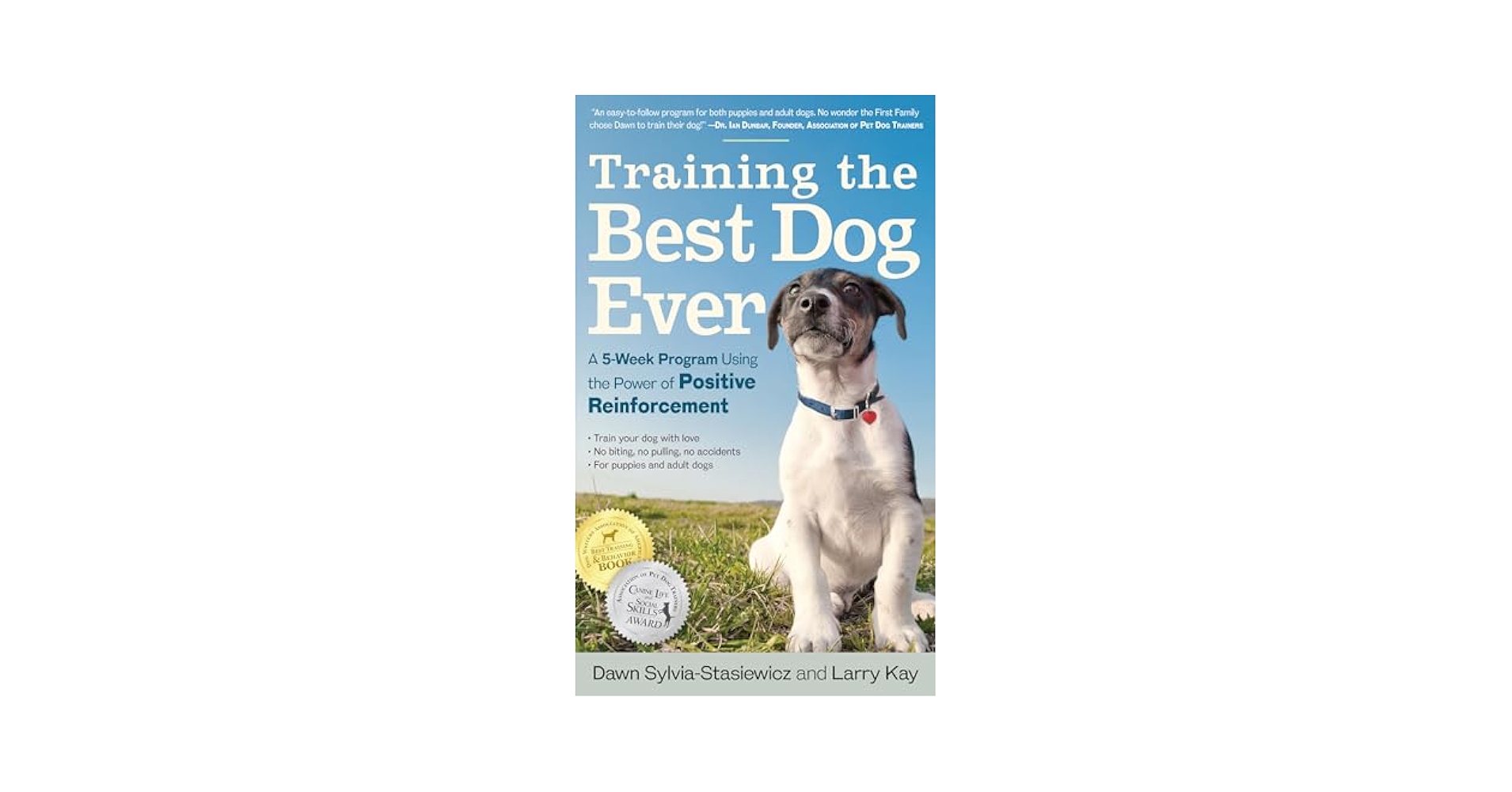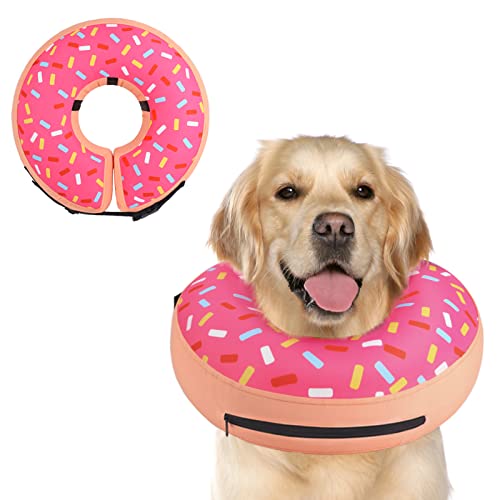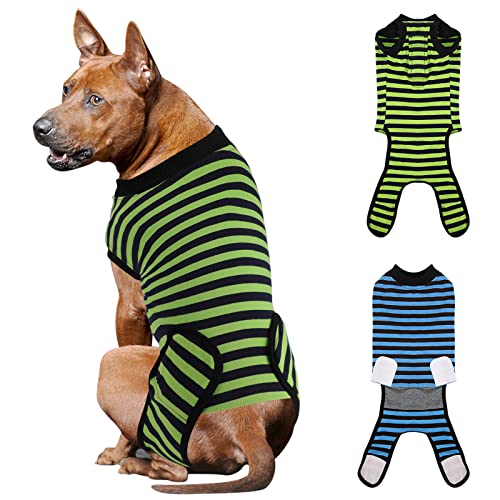If your dog suffers from allergies, you know how hard it is to find the right food that won’t cause itching, upset stomach, or worse. You want to give your furry friend meals that are safe, healthy, and tasty—but store-bought options often fall short.
What if you could make your own hypoallergenic dog food at home? Imagine knowing exactly what goes into every bite your dog takes. In this post, you’ll discover simple steps to create a homemade recipe designed to reduce allergic reactions and keep your dog happy and healthy.
Keep reading, because your dog’s comfort and well-being depend on it.

Credit: www.amazon.com
Benefits Of Hypoallergenic Dog Food
Hypoallergenic dog food helps dogs with food allergies or sensitive stomachs. It uses limited ingredients to avoid common allergens.
This special food supports dogs’ health by reducing allergic reactions and improving digestion. It also promotes better skin and coat condition.
Reducing Allergic Reactions
Hypoallergenic dog food avoids ingredients that cause allergies. This helps lower symptoms like itching, swelling, and redness.
Using novel or limited protein sources prevents the immune system from reacting badly. It keeps your dog more comfortable.
- Fewer skin irritations
- Less scratching and biting
- Reduced ear infections
Improving Digestive Health
Hypoallergenic dog food often has simple, easy-to-digest ingredients. This helps reduce stomach upset and diarrhea.
It supports good gut bacteria and nutrient absorption. Dogs feel better and have more energy.
- Less gas and bloating
- Regular bowel movements
- Better nutrient use
Enhancing Coat And Skin Quality
Hypoallergenic dog food often includes healthy fats and vitamins. These nutrients improve skin moisture and fur shine.
Dogs eating this food usually have less dry skin and fewer hot spots. Their coats look healthier and feel soft.
- Shiny and soft fur
- Fewer skin flakes
- Less hair loss
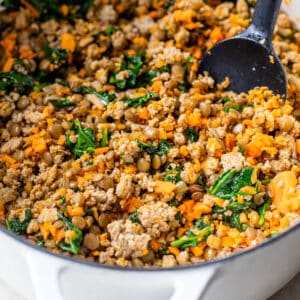
Credit: thealmondeater.com
Common Dog Food Allergens
Many dogs suffer from food allergies that cause itching and stomach problems. Knowing common allergens helps you make safe food.
Some ingredients in dog food often trigger allergic reactions. Avoiding these can improve your dog’s health.
Identifying Trigger Ingredients
Some foods cause allergies more than others. Common triggers include proteins and grains.
- Beef
- Chicken
- Dairy products
- Eggs
- Wheat
- Soy
- Corn
- Lamb
These ingredients may cause your dog to react. Watch their meals and treat choices carefully.
Symptoms Of Food Allergies
Food allergies show different signs in dogs. Skin problems and digestion issues are common symptoms.
- Itchy skin or rashes
- Frequent ear infections
- Red or inflamed skin
- Vomiting
- Diarrhea
- Excessive licking or chewing paws
- Swelling of the face or ears
Noticing these signs early helps you find the cause and protect your dog.
Elimination Diet Basics
An elimination diet helps find the ingredient causing the allergy. You feed your dog simple food with few ingredients.
You remove common allergens and add one new ingredient at a time. This process shows which food causes problems.
- Start with a novel protein like duck or venison
- Feed this diet for 8-12 weeks
- Add one ingredient back every 1-2 weeks
- Watch for allergy symptoms
- Stop adding ingredients if symptoms return
Work with a vet during this diet to keep your dog safe and healthy.
Choosing The Right Ingredients
Making hypoallergenic dog food starts with picking safe ingredients. Choosing the right foods helps avoid allergies and keeps dogs healthy.
Select ingredients that are gentle on your dog’s stomach. This lowers the chance of allergic reactions and skin problems.
Selecting Novel Proteins
Novel proteins are new types of meat your dog has not eaten before. These proteins reduce allergy risks because the dog’s body does not recognize them as allergens.
Good novel proteins include rabbit, duck, venison, and fish. Try to avoid common proteins like beef, chicken, or lamb if your dog shows allergies.
- Rabbit: low allergy risk and easy to digest
- Duck: rich in nutrients and less common
- Venison: lean and uncommon for most dogs
- Fish: good source of omega-3 fatty acids
Safe Carbohydrate Sources
Carbohydrates provide energy and fiber. Choose simple, safe carbs that rarely cause allergies or upset stomachs.
Sweet potatoes, peas, and quinoa are good options. Avoid wheat, corn, and soy since they are common allergens for dogs.
- Sweet potatoes: easy to digest and full of vitamins
- Peas: good fiber and protein source
- Quinoa: gluten-free and high in nutrients
Incorporating Essential Nutrients
Dogs need vitamins and minerals for healthy skin, coat, and bones. Add ingredients that cover these needs without causing allergies.
Include fish oil for omega-3, pumpkin for fiber, and carrots for vitamins. These ingredients support your dog’s overall health safely.
- Fish oil: supports skin and coat health
- Pumpkin: adds fiber and helps digestion
- Carrots: rich in vitamin A and antioxidants
- Calcium supplements: strengthen bones and teeth
Step-by-step Hypoallergenic Dog Food Recipe
Making hypoallergenic dog food at home helps reduce your dog’s allergy risks. This recipe uses simple ingredients that are gentle on your pet’s stomach.
Follow these steps carefully to prepare a healthy and safe meal for your dog.
Gathering Ingredients
Choose ingredients that are unlikely to cause allergies. Use fresh and natural items without additives or preservatives.
- Lean protein like turkey or chicken (skinless, boneless)
- Cooked sweet potatoes or pumpkin for fiber
- Brown rice or quinoa as a gentle grain option
- Vegetables like green beans or carrots, cooked and chopped
- Fish oil or flaxseed oil for omega-3 fatty acids
- Calcium supplement or crushed eggshells for bones
Preparation Instructions
Cook each ingredient separately to keep flavors clear. Avoid seasoning or oils that may irritate your dog.
- Boil the lean protein until fully cooked, then chop finely.
- Steam or boil sweet potatoes or pumpkin until soft.
- Cook the brown rice or quinoa according to package instructions.
- Steam vegetables until tender and chop into small pieces.
- Mix protein, vegetables, and grains in a large bowl.
- Add fish oil or flaxseed oil and calcium supplement, mix well.
Storage Tips
Store homemade hypoallergenic dog food properly to keep it fresh and safe. Use clean containers with lids.
- Divide food into daily portions to avoid waste.
- Keep portions in airtight containers or sealed bags.
- Refrigerate food for up to 3 days.
- Freeze extra portions for up to 2 weeks.
- Thaw frozen food in the fridge before serving.
Customizing Recipes For Your Dog
Making hypoallergenic dog food at home helps you control ingredients. You can adjust recipes to fit your dog’s needs and preferences.
Custom recipes keep your dog healthy and happy. This guide helps you change recipes based on size, breed, and health.
Adjusting For Size And Breed
Different dog sizes need different food amounts. Small dogs eat less, while large dogs need more calories.
Breed affects energy needs and food type. Some breeds digest certain ingredients better than others.
- Small breeds: use smaller portions and easy-to-digest ingredients
- Large breeds: add more protein and healthy fats
- Active breeds: increase calories for energy
- Less active breeds: reduce fat to avoid weight gain
Addressing Specific Health Needs
Hypoallergenic recipes help dogs with food allergies or sensitivities. Avoid common allergens like wheat, soy, and dairy.
Some dogs need special diets for health issues like kidney problems or digestion troubles.
- Use novel proteins like duck or venison for allergies
- Include easily digestible carbs like sweet potatoes
- Add supplements for joint health or skin care if needed
- Limit ingredients that may upset sensitive stomachs
Consulting Your Veterinarian
Your vet knows your dog’s health best. Talk to them before changing your dog’s diet.
They can guide you on safe ingredients and proper nutrition. This helps prevent health problems from diet changes.
- Discuss your dog’s allergies and medical history
- Ask about supplements or vitamins your dog may need
- Request advice on portion sizes and feeding frequency
- Schedule check-ups to monitor your dog’s health
Tips For Transitioning To New Food
Changing your dog’s food needs care and patience. A smooth switch helps avoid stomach problems.
Use these tips to make the transition easy and safe for your dog.
Gradual Introduction Plan
Start by mixing a small amount of new food with the old food. Slowly increase the new food over days.
- Day 1-2: 25% new food, 75% old food
- Day 3-4: 50% new food, 50% old food
- Day 5-6: 75% new food, 25% old food
- Day 7: 100% new food
Monitoring Your Dog’s Reaction
Watch your dog’s behavior and health closely during the change. Look for signs of allergies or upset stomach.
- Check for itching or redness on skin
- Note any vomiting or diarrhea
- Observe appetite and energy levels
- Keep track of any changes in bowel movements
Handling Potential Issues
If your dog shows signs of discomfort, slow down the switch or stop and consult a vet. Some reactions need medical care.
- Pause the transition if vomiting occurs
- Reduce new food amount if diarrhea starts
- Seek vet advice for severe allergies
- Consider an alternative hypoallergenic recipe if needed
Homemade Vs Store-bought Hypoallergenic Food
Hypoallergenic dog food helps pets with food allergies or sensitivities. You can buy it ready-made or prepare it at home. Both options have good points and challenges.
This guide compares homemade and store-bought hypoallergenic dog food. It covers cost, quality, and convenience to help you decide.
Cost Comparison
Homemade hypoallergenic food can be cheaper or more expensive. It depends on ingredients and recipes you choose. Store-bought food has a fixed price but may cost more for special formulas.
Buying ingredients in bulk for homemade meals can save money. But buying fresh, high-quality items raises costs. Store food prices include production and packaging.
- Homemade food: cost varies with ingredients
- Store-bought food: consistent but often higher price
- Bulk buying can lower homemade food costs
- Special store formulas may be pricier
Quality And Control
Making food at home gives you full control over ingredients. You can avoid allergens and add fresh items your dog likes. Store food follows strict recipes but may contain preservatives or fillers.
Store-bought hypoallergenic foods often have balanced nutrition. Homemade meals need careful planning to include all nutrients. You can work with a vet to create the right recipe for your dog.
- Homemade food: full control over ingredients
- Store food: tested for balanced nutrition
- Homemade needs expert guidance for nutrition
- Store food may include preservatives
Convenience Factors
Store-bought hypoallergenic food saves time. You buy it ready to serve or easy to prepare. Homemade food requires cooking, measuring, and storing. It takes more effort daily.
If you have a busy schedule, store food is simpler. Homemade meals let you adjust recipes anytime. You can control freshness but need to plan ahead to avoid running out.
- Store food: quick and easy to use
- Homemade food: time-consuming preparation
- Homemade offers recipe flexibility
- Store food ideal for busy pet owners

Credit: www.chefpaw.com
Frequently Asked Questions
What Is Hypoallergenic Dog Food?
Hypoallergenic dog food is specially formulated to minimize allergens. It often excludes common allergens like wheat, soy, and beef. This type of food helps reduce allergic reactions in sensitive dogs. It’s ideal for dogs with food sensitivities or allergies.
Can I Make Hypoallergenic Dog Food At Home?
Yes, you can make hypoallergenic dog food at home. Use high-quality ingredients like lean meats and vegetables. Avoid common allergens such as grains and soy. Homemade recipes allow you to control what your dog consumes.
Which Ingredients Are Hypoallergenic For Dogs?
Hypoallergenic ingredients for dogs include lean meats, sweet potatoes, and brown rice. Fish and lamb are often used due to their low allergenicity. Avoiding dairy, soy, and wheat can also help prevent allergic reactions.
How Do I Know If My Dog Needs Hypoallergenic Food?
Signs your dog needs hypoallergenic food include itching, digestive issues, and ear infections. If you notice these symptoms, consult your veterinarian. They can recommend testing and dietary changes to address your dog’s specific needs.
Conclusion
Making hypoallergenic dog food at home helps keep your pet healthy. It avoids ingredients that cause allergies or stomach upset. You control what goes into every meal. Fresh, simple ingredients make a big difference. Always check with your vet before changing diets.
Watch your dog’s reaction to new food closely. Homemade recipes can save money and worry. Your dog will thank you with better health and happiness. Try it step by step, and enjoy caring for your furry friend.

